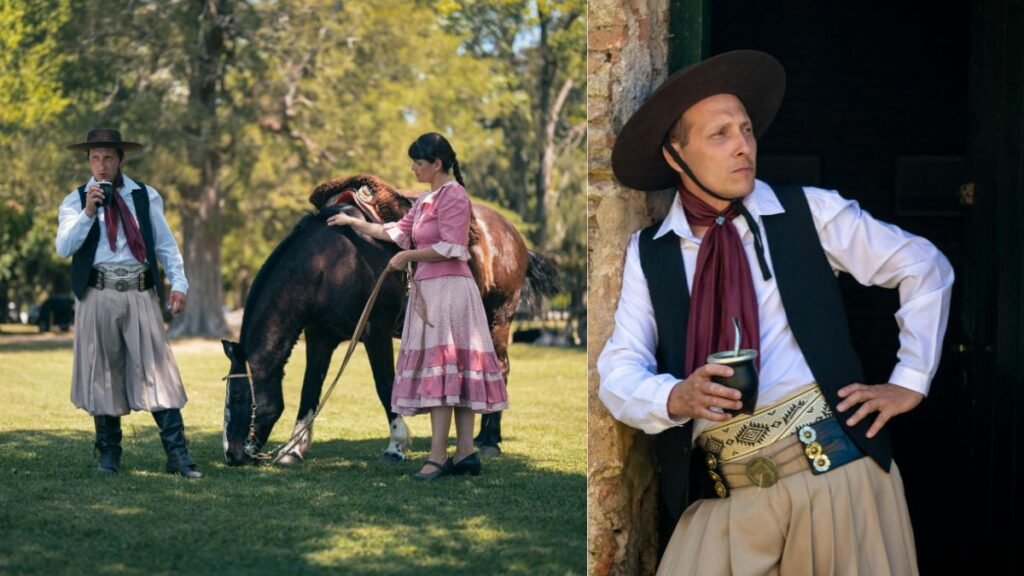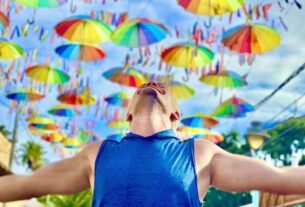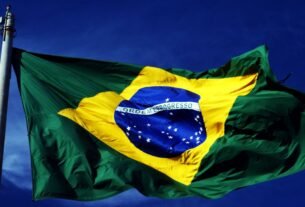Introduction
What makes a country’s identity truly unique? Is it the land, the history, or the people who give it life? In the case of this vibrant nation, the answer lies in its diverse Brazilian people, a melting pot of cultures that shapes its heart and soul.
Each individual story contributes to a larger narrative, reflecting the myriad influences that have come together over centuries. The land itself, rich in natural beauty and resources, serves as a backdrop for the interactions of diverse ethnicities and traditions.
Historical events, from colonisation to independence, have further shaped the identities of its citizens, fostering a unique blend of customs and practices.
This dynamic interplay between geography, history, and the vibrant tapestry of its Brazil people creates a complex and compelling identity that is distinctly Brazilian.

With over 214 million inhabitants, this South American giant ranks as the world’s seventh most populous country. But numbers only tell part of the story. From Portuguese settlers to African traditions and Indigenous roots, its identity is woven from countless threads.
Through six remarkable personal stories, we’ll explore how different groups contribute to this nation’s rich tapestry. These narratives reveal more than statistics; they capture the essence of a place where heritage and modernity dance together.
Key Takeaways
- Home to 214 million residents, ranking among the world’s largest populations
- A multicultural society with European, African, and Indigenous influences
- Constitutional recognition of birthright citizenship for all natives
- Genetic studies reveal widespread triracial ancestry among citizens
- Six representative stories showcase the nation’s demographic diversity
Introduction: The Heartbeat of Brazil
From golden coastlines to dense rainforests, life thrives in unexpected ways across this nation. The land stretches over 4,600 miles of Atlantic shores, where the sun-kissed beaches are lined with vibrant communities; yet, 60% remains cloaked in Amazonian wilderness, a treasure trove of biodiversity.
Take a look and discover the heart of Brazil (multilingual site)
Urban hubs like São Paulo buzz with energy, showcasing a blend of cultures and innovation, while remote regions whisper tales of tradition, where indigenous practices and local customs are preserved, echoing the voices of ancestors who have lived in harmony with nature for generations.
Rio de Janeiro dances to its own rhythm, a cultural capital where samba echoes through cobblestone streets. Meanwhile, Brasília stands as a modernist marvel, its political gravity pulling focus inward. This duality defines the nation: vibrant chaos meets deliberate order.
With 86.6% of residents in cities, urbanisation fuels progress but strains resources. Rural communities safeguard ancestral knowledge, yet they often face isolation. Over centuries, migrations blurred racial lines, creating a society where identity flows like water. Here, unity isn’t sameness—it’s harmony in diversity.
Brazil’s Demographic Mosaic
Numbers tell only part of the story behind this nation’s vibrant identity. With 214 million residents, it ranks among the world’s most populous nations. Yet its true richness lies in how cultures blend and contrast across regions.
This blending is not merely a statistic; it represents a tapestry woven from the threads of indigenous traditions, African influences, and European heritage. Each region contributes its unique flavours, languages, and customs, enriching the national narrative.
From the colourful festivals of Bahia to the European-inspired architecture of São Paulo, Brazil’s cultural landscape is a reflection of its diverse populace. The interplay of these various backgrounds fosters a dynamic society where different perspectives coexist, creating a vibrant atmosphere that is both complex and harmonious.

A Nation of 214 Million
The 2022 census reveals a near-even split: 43.5% identify as Mixed, 43.5% as White, 10.2% as Black, and 0.6% as Indigenous. These groups aren’t evenly distributed across the vast landscape of Brazil.
In Santa Catarina state, for instance, a striking 83.9% claim White ancestry, showcasing the region’s historical European settlement patterns. In contrast, Roraima’s population is just 20.9% White, reflecting a different demographic evolution influenced by the indigenous presence and migration from neighbouring countries.
Such variations reflect historical migration patterns that have shaped the nation’s identity over centuries. The “Pardo” classification, officially denoting mixed heritage, carries significant social weight and implications in Brazilian society. It bridges racial divides, allowing individuals to navigate a complex social landscape, but also masks nuanced identities that may encompass a rich blend of cultural backgrounds and personal histories.
This classification can influence social interactions, access to opportunities, and even political representation, highlighting the ongoing conversations about race and identity in Brazil.
Ethnic Diversity: A Legacy of Migration
Since 1822, over 5 million immigrants have arrived in Brazil, mostly from Southern Europe, significantly influencing the Country’s cultural landscape. Italians (1.5 million) and Spaniards (700,000) played crucial roles in shaping urban centres, bringing with them traditions, cuisines, and languages that have become integral to Brazilian identity.
São Paulo, in particular, hosts the largest Japanese diaspora outside Japan, a legacy of 250,000 pioneers who established vibrant communities and contributed to the economy through agriculture and commerce.
Indigenous communities practised cunhadismo, a unique social system that integrated outsiders through kinship and familial ties, fostering a sense of belonging and shared identity. Today, new groups continue to join the mosaic of Brazilian society. Since 2011, 142,250 Venezuelan refugees crossed borders, adding fresh threads to the tapestry and bringing their own cultural influences, challenges, and resilience, which enrich the nation’s narrative.
The Historical Roots of Brazil’s People
Centuries of migration and resistance shaped the soul of this land. From Portuguese caravels that first navigated these waters to the rhythmic beats of African drumbeats echoing through the streets, each wave of settlers and survivors left indelible marks on the cultural fabric of Brazil.
Today’s culture is a living archive of these journeys, reflecting a dynamic interplay of influences that continues to evolve with each new wave of immigrants and the ongoing contributions of indigenous peoples.
From Colonisation to Independence
In the 16th century, Portuguese explorers claimed these shores, driven by the desire for sugar and gold, as they sought to expand their empire and secure wealth from the New World.
The colonial economy thrived on enslaved labour, with Valongo Wharf in Rio receiving 5 million Africans, the largest forced migration in history. This influx of enslaved individuals not only fueled the growth of sugarcane plantations but also laid the groundwork for a complex social hierarchy that would shape Brazilian society for centuries to come.
By 1822, independence was declared, yet Portugal’s cultural foundations remained deeply embedded in Brazilian society. The 19th century saw coffee overtake sugar as the dominant crop, attracting European settlers to São Paulo’s plantations, where they sought new opportunities and contributed to the burgeoning economy.
Mortality rates among enslaved inhabitants starkly contrasted with immigrant influxes, altering demographics forever and leading to a diverse cultural landscape that reflected both the legacy of slavery and the contributions of new settlers.
The African Diaspora’s Legacy
Resistance flared in the 17th century with quilombos, such as Palmares, where escaped slaves formed free societies. Their spirit endures in Bahia’s capoeira (a martial art disguised as dance) and acarajé (a sacred street food).
Syncretic religions, such as Candomblé, blended Yoruba beliefs with Catholicism, while Umbanda emerged as a uniquely local faith. The 1888 Golden Law abolished slavery, but freed Africans faced exclusion, pushing many toward urban centres along the rivers of the Amazon basin.
- Sugar to Coffee: 1600s plantations vs. 1800s immigrant labour shifts
- Cultural Fusion: Candomblé’s rituals still pulse in Salvador’s streets
- Abolition’s Aftermath: From marginalization to cultural reclamation
6 Incredible Stories of Brazil People
Beyond statistics and maps, the true spirit of a nation lives in its residents. These six narratives showcase resilience, tradition, and innovation across diverse communities, each contributing uniquely to the fabric of Brazilian society.
From the Amazon rainforest to urban centres, the stories of these individuals highlight how they navigate challenges and celebrate their heritage. Each story forms an essential part of the cultural mosaic.

The Rubber Tappers of Acre
Deep in the Amazon, seringueiros harvest latex using methods that have remained unchanged for years. These traditional techniques, passed down through generations, emphasise a deep respect for the forest and its ecosystems.
Chico Mendes, their murdered leader, pioneered sustainable extraction, advocating for the rights of both the tappers and the environment. His legacy lives on through cooperatives that protect 2 million acres, ensuring the forest remains a source of livelihood for future generations.
These forest guardians blend Indigenous knowledge with modern ecology, employing practices that promote biodiversity and sustainability. Their fight against deforestation continues today, with 740km² lost just last year. This ongoing battle highlights the urgent need for environmental protection in the face of industrial pressures and illegal logging.
The Japanese-Brazilian Pioneers
The Liberdade district in São Paulo pulses with neon-lit storefronts selling mochi, a sweet treat that reflects the community’s rich heritage. Since 1908, 250,000 immigrants transformed coffee plantations into vibrant cultural hubs, introducing Japanese culinary traditions and festivals to Brazil.
Today, their descendants lead in the tech and arts industries, continuing to innovate while honouring their ancestors’ legacy.
Annual Tanabata festivals draw crowds with paper wishes, celebrating the connection between the past and present. This community demonstrates that traditions can evolve without losing their roots, showcasing how cultural identity can thrive in a multicultural society. The blending of Japanese and Brazilian customs enriches the cultural landscape, creating a unique identity that resonates throughout the nation.
The Quilombola Communities
Descendants of escaped slaves maintain 3,500+ recognised settlements, each a testament to resilience and cultural pride. Palmares, their legendary 17th-century refuge, not only inspires modern land rights battles but also symbolises the enduring spirit of freedom and resistance against oppression.
Collective ownership of land and resources is a cornerstone of their identity, preserving African traditions that have been passed down through generations, including music, dance, and spiritual practices.
From capoeira, a martial art that combines elements of dance and music, to sacred foods that hold deep cultural significance, these groups keep resistance alive through culture, embodying the struggle against historical injustices.
Their vibrant festivals and communal gatherings not only celebrate their heritage but also foster a sense of unity and purpose. Their struggle for recognition continues, as they advocate for their rights and seek to educate broader society about their contributions and ongoing challenges.
The Gaúchos of the South
Rugged cowboys dominate Rio Grande do Sul’s pampas, living a lifestyle deeply connected to the land and its traditions.
Chimarrão tea circles serve as social hubs where stories are shared and bonds are strengthened, while rodeio crioulo festivals, filled with rodeo competitions and traditional music, define their days. Leather boots crunch on red dirt as guitars play, echoing the sounds of their ancestors who roamed these vast landscapes.
This frontier spirit shaped the country‘s southern identity, instilling values of bravery, camaraderie, and respect for the natural world. Their code blends honour with hospitality, as they welcome visitors with open arms and share their rich cultural heritage through food, dance, and storytelling.
The Gaúchos embody a unique blend of indigenous, African, and European influences, creating a vibrant cultural tapestry that reflects the diverse history of Brazil.
The Indigenous Guardians of the Xingu
Sixteen ethnic groups protect 2.8 million hectares of Amazon rainforest, a vital ecosystem that is crucial for global biodiversity. Each group possesses unique languages, customs, and traditions that have been passed down through generations, showcasing their deep connection to the land.
Body paint tells clan stories while arrowheads stop illegal loggers, serving as both cultural symbols and practical tools in their fight against environmental degradation. Their sustainable methods, which include agroforestry and traditional hunting practices, could save the biome and offer valuable lessons in conservation to the world.
Elders teach children to track animals by broken twigs, a skill that requires keen observation and respect for nature. This knowledge, accumulated over 1,000 years, now helps combat climate change by promoting sustainable living and preserving the forest’s delicate balance.
The community’s holistic approach to land stewardship is a testament to their resilience and adaptability in the face of modern challenges.
The Samba Queens of Rio
Mangueira Samba School’s porta-bandeiras twirl 30-pound banners during mid-dance, a stunning display of strength and artistry that captivates the audience. Their sequined costumes honour Afro-Brazilian deities, intricately designed to reflect the rich spiritual heritage of their ancestors.
These performers turn oppression into art, channelling their struggles and triumphs into powerful performances that resonate with both local and global audiences.
Behind the Carnival glitter lies fierce activism, as these artists use their platforms to address social issues and advocate for change. Their lyrics demand equality, making rhythm a weapon for change, empowering marginalised voices and inspiring solidarity among diverse communities. Through dance and music, they challenge societal norms and celebrate their cultural identity.
Vibrant Traditions That Unite a Nation
Cultural expressions reveal the soul of a place more than any map ever could. From rhythmic dances to flavorful dishes, traditions bind communities across this vast land, creating a sense of belonging and shared history.
They transform ordinary moments into celebrations of identity, weaving together the past and present in a vibrant tapestry of life. Festivals, rituals, and everyday practices reflect the diverse influences that shape Brazilian culture, fostering unity amidst diversity.
Carnival: More Than a Party
Salvador’s streets explode with colour during Carnival, drawing 2 million participants along 25km of parades. This isn’t just a festival, it’s an economic powerhouse. Rio’s version alone generates over $1B annually.
Axé music pulses through the crowds, its beats tracing back to African sacred rhythms. What began as spiritual chants has now evolved into a global pop phenomenon. Every sequin and samba step tells a story of resilience.
Capoeira: Dance, Martial Art, and Resistance
With 16,000+ schools nationwide, capoeira transcends its origins as a clandestine slave rebellion. UNESCO honoured it as Intangible Heritage in 2014, recognising its blend of acrobatics and coded language.
This recognition celebrates its artistic expression and acknowledges its historical significance as a form of resistance against oppression, allowing enslaved Africans to preserve their culture and identity through movement and music.
Masters still teach the roda (circle), where kicks disguise combat strategies. This living history connects modern groups to their ancestors’ ingenuity. In capoeira, every movement tells a story, blending martial arts with dance, and reflecting the struggles and triumphs of those who practised it in secrecy. The roda serves as a communal space where participants engage not just in physical competition but also in cultural exchange, fostering a sense of belonging and identity.
From feijoada’s enslavement-era roots to Bumba Meu Boi’s tri-cultural folklore, traditions thrive in varied regions. They prove that unity flourishes when culture leads the way. These cultural expressions, including capoeira, highlight the resilience of communities that have faced adversity throughout history, illustrating how art can be a powerful vehicle for social change and cohesion.
Brazil’s Modern Challenges and Triumphs
Progress and struggle coexist in this dynamic nation, weaving a complex tapestry of experiences that shape its identity. While global recognition grows for cultural exports, such as samba and bossa nova, internal disparities reveal persistent gaps that challenge the notion of a unified national success.
The government balances economic growth with social welfare, crafting policies that address both urban density and environmental crises, often navigating the difficult terrain of competing interests and limited resources.
Urbanisation and Inequality
With an 87% urbanisation rate, cities strain under population pressures, leading to challenges in infrastructure and public services.
São Paulo’s financial district gleams beside Paraisópolis favela—a visual metaphor for the nation’s 53.4 Gini coefficient, the highest in South America, which starkly illustrates the wealth gap between the affluent and the impoverished.
Programs like Bolsa Família have demonstrated an impact after 20 years, lifting 10 million people out of extreme poverty and providing a safety net for the most vulnerable. Yet 35 million still reside in informal settlements, facing:
- Limited sanitation access, which exacerbates health issues
- Transportation bottlenecks that hinder economic mobility
- Employment barriers, particularly for women and youth
| Metric | Urban Areas | Rural Areas |
|---|---|---|
| Poverty Rate | 18.3% | 32.7% |
| Internet Access | 82% | 49% |
| Life Expectancy | 76.5 years | 71.2 years |
Environmental Stewardship
The world watches as this nation tackles ecological dilemmas, with international attention focused on its vast and biodiverse landscapes. A 34% drop in the deforestation rate in 2023 signals progress, backed by the $1.3 billion Amazon Fund, which aims to protect critical habitats and promote sustainable practices. Renewable energy leadership shines with 85% clean electricity, mostly hydroelectric, demonstrating a commitment to reducing carbon emissions and fostering green technologies.
Mining reforms followed the 2019 Mariana dam collapse that spilt 43,000 m³ of toxic mud. Such tragedies fuel stricter regulations while testing the government’s response to crises. Conservation efforts now blend Indigenous knowledge with satellite monitoring, proving that tradition and technology can coexist.
Conclusion: The Living Tapestry of Brazil
A nation’s pulse beats strongest in its shared stories and struggles. Nearly 5 million citizens abroad, 2.1 million in the U.S., carry traditions globally, while Portuguese unites 99.7% of the population at home, despite over 200 Indigenous languages. This linguistic harmony shapes the country’s identity as much as its rainforests or rhythms.
By 2030, demographers project that there will be 224 million residents. Young people lead digital revolutions, from funk carioca beats to Netflix hits shared with the world. Yet ancestral wisdom persists, Guarani youth champion “Teko Porã” (good living), blending eco-activism with ancient values.
Modernisation and tradition aren’t rivals here. They’re an integral part of the same tapestry. Whether through Carnival’s glitter or hackathons in São Paulo, this land proves resilience thrives when culture adapts without forgetting. Learn more Brasil history.
FAQ
What makes Brazil’s population so diverse?
Centuries of migration, colonisation, and cultural blending shaped its demographic mosaic. Indigenous groups, Portuguese settlers, African descendants, and later immigrants from Europe, Japan, and the Middle East created a uniquely rich heritage.
How did African culture influence modern traditions?
Enslaved Africans brought rhythms, religions, and resilience. Their legacy endures in the samba, capoeira, Candomblé, and quilombola communities, which preserve ancestral customs.
Why are quilombolas significant today?
These descendants of escaped slaves maintain self-sustaining villages. Their fight for land rights highlights struggles against historical injustice while preserving Afro-Brazilian identity.
What challenges do indigenous groups face?
Deforestation and land disputes pose a threat to tribes like the Xingu. Despite this, they remain vital guardians of biodiversity and traditional knowledge in the Amazon.
How does Carnival reflect national identity?
Beyond glitter and parades, it’s a celebration of unity. Neighbourhood blocos and samba schools showcase regional diversity while reinforcing collective pride.
What role do Japanese-Brazilians play in society?
Over a century after migration, they’ve shaped agriculture, arts, and tech. Cities like São Paulo blend Nikkei culture with local flavours, from sushi to manga festivals.




